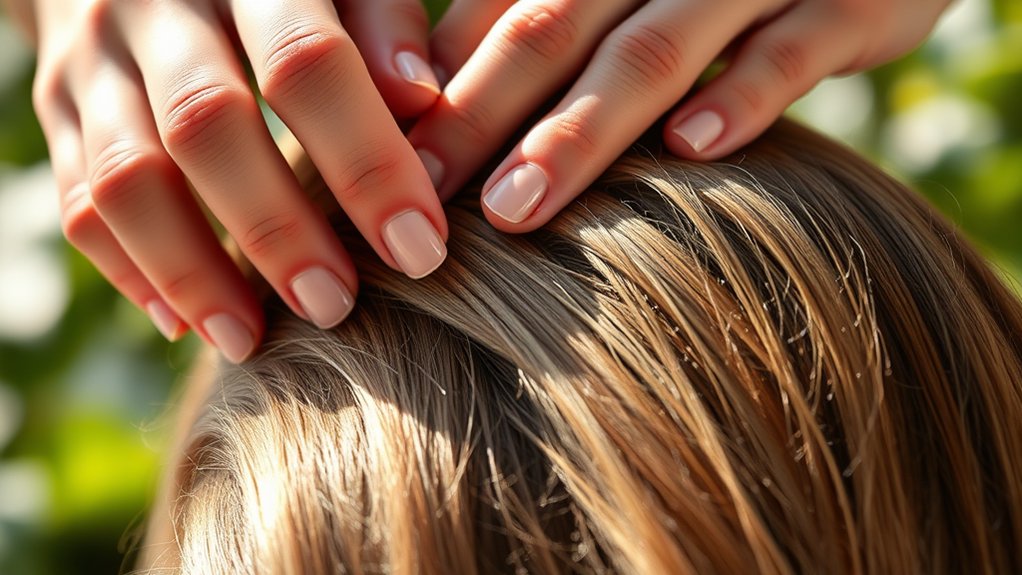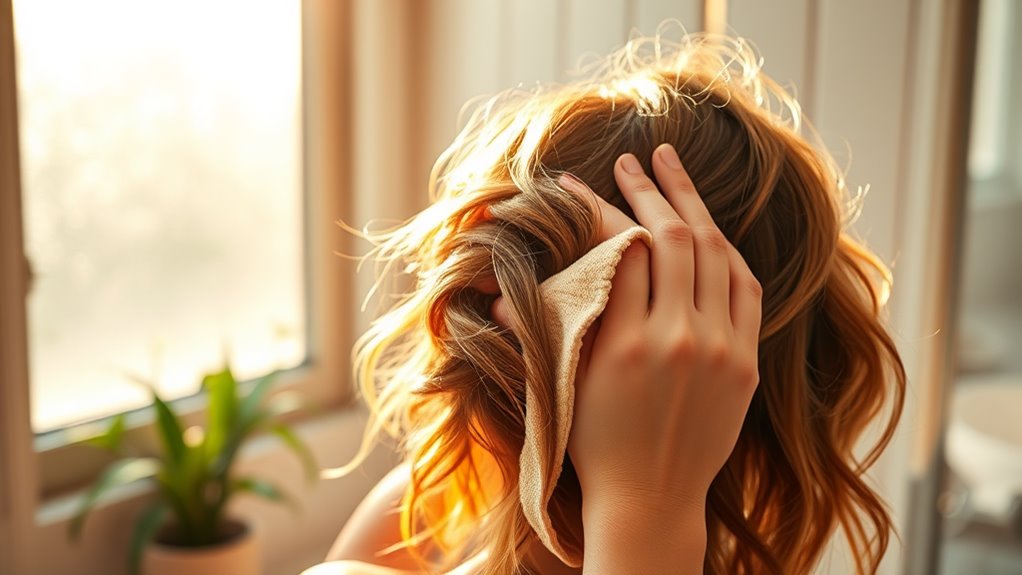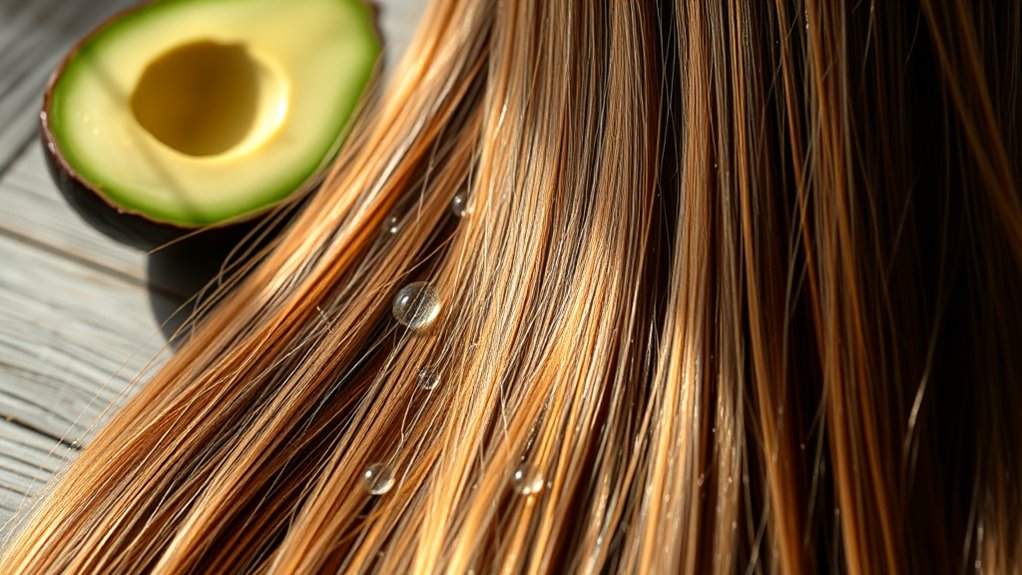How to Strengthen Hair With Scalp Massage
Imagine the soothing sensation of your fingertips gently kneading your scalp, awakening dormant follicles and enhancing blood flow. Scalp massage isn’t just a relaxing ritual; it has proven benefits for hair strength and health. By incorporating specific techniques and natural oils, you can effectively nourish and revitalize your hair. Curious about the best practices and benefits? Let’s explore how to integrate this mindful practice into your routine for optimal hair vitality.
Benefits of Scalp Massage for Hair Strength
Scalp massage offers multiple benefits that can significantly enhance hair strength and overall health. By stimulating blood circulation in your scalp, you’ll nourish hair follicles, promoting stronger hair growth.
Enhanced circulation also increases the delivery of essential nutrients and oxygen to the roots, fostering resilience against breakage. Additionally, scalp massage helps relieve stress, which is known to negatively impact hair health. Regularly using recommended oils during your scalp massage can further amplify these benefits, contributing to healthier and stronger hair.
Investing time in regular scalp massage for stronger hair can create an optimal environment for growth, reducing hair loss and enhancing overall hair vitality. Incorporate this practice into your routine, and you’ll likely see remarkable improvements in your hair’s strength.
Techniques for Effective Scalp Massage
To achieve effective scalp massage, you can utilize a variety of techniques that enhance blood flow and stimulate hair follicles.
Focus on these methods:
-
Fingertip Circles: Use your fingertips to make small, circular motions across your scalp. This technique promotes relaxation and better circulation.
-
Firm Pressure: Apply gentle but firm pressure with your palms. This helps release tension and encourages blood flow to the hair roots.
-
Tapping Motion: Lightly tap your scalp with your fingertips. This invigorates the skin, awakening dormant hair follicles.
Incorporating these techniques into your routine can significantly improve hair health and overall scalp vitality. Additionally, regular scalp massages can also help reduce stress levels that negatively impact hair growth.
Recommended Oils to Use for Scalp Massage
Choosing the right oils for scalp massage can significantly enhance your hair’s strength and health.
Natural oils like coconut and jojoba provide essential nutrients, while essential oils like rosemary and lavender promote circulation and stimulate hair growth. Additionally, coconut oil’s transformative benefits contribute to silky, lustrous strands, making it a great choice for your scalp care routine.
Understanding the benefits of these oils will help you create an effective scalp care routine.
Best Natural Oils
Incorporating the right natural oils during a scalp massage can significantly enhance hair health and vitality.
Here are some of the best natural oils to consider:
-
Coconut Oil: Rich in fatty acids that penetrate the hair shaft, promoting moisture retention.
-
Jojoba Oil: Closely resembles human sebum, effectively moisturizing your scalp without clogging pores.
-
Olive Oil: Packed with antioxidants, it nourishes hair and protects against damage.
Using these oils can transform your scalp massage into a nourishing experience, supporting stronger hair and a healthier scalp.
Choose the oil that resonates most with you for maximum benefits.
Essential Oils Benefits
Have you ever wondered how essential oils can elevate your scalp massage and enhance your hair’s vitality? Incorporating these oils can improve blood circulation, promote hair growth, and reduce dandruff, thanks to their anti-inflammatory properties. Here’s a table of recommended essential oils you can use:
| Essential Oil | Benefits | Application |
|---|---|---|
| Lavender | Promotes relaxation and hair growth | Dilute & massage into scalp |
| Peppermint | Stimulates circulation | Mix with carrier oil |
| Tea Tree | Fights dandruff and infections | Combine with shampoo |
| Rosemary | Encourages hair thickness | Use in scalp treatment |
| Cedarwood | Reduces hair loss | Apply with carrier oil |
Frequency and Duration of Scalp Massage
To effectively strengthen your hair, understanding the optimal frequency and duration of scalp massage is crucial.
Research suggests that a consistent routine, whether daily or weekly, can significantly enhance blood circulation and promote hair growth.
In the following discussion, we’ll explore the ideal durations for these sessions to maximize their benefits.
Optimal Scalp Massage Frequency
Although many people overlook the significance of scalp massage, understanding its optimal frequency can make a substantial difference in hair health. Aim for a scalp massage at least three times a week. Consistent stimulation enhances blood circulation and promotes hair growth.
-
You’ll feel a deep relaxation that reduces stress.
-
Improved scalp health can lead to thicker, fuller hair.
-
The sense of connection to your body boosts overall wellness.
Finding a routine that fits your lifestyle ensures you reap the benefits while keeping your hair strong and vibrant. Prioritize this practice, and your hair will thank you.
Ideal Duration for Effectiveness
The ideal duration for a scalp massage plays a crucial role in maximizing its benefits for hair health. Generally, aim for at least 10 to 15 minutes per session.
This length allows sufficient time for stimulating blood circulation, which nourishes hair follicles and promotes growth. During this period, focus on applying gentle pressure with your fingertips, targeting problem areas effectively.
Studies show that consistency enhances results, so incorporating this duration into your routine can significantly improve scalp vitality and hair strength.
Daily vs. Weekly Sessions
Choosing between daily and weekly scalp massage sessions depends on your hair health goals and individual scalp condition. Daily massages can enhance blood circulation, promoting hair growth and relaxation, while weekly sessions provide targeted care without overwhelming your scalp.
Consider these factors:
-
Hair Type: Fine hair may benefit from daily stimulation, while thicker hair might prefer weekly focus.
-
Scalp Sensitivity: If your scalp’s sensitive, opt for weekly sessions to avoid irritation.
-
Lifestyle: Daily routines mightn’t fit everyone—choose what aligns with your schedule.
Find the right balance to maximize your hair health and achieve vibrant, stronger locks.
Additional Tips for Hair Care and Scalp Health
While maintaining a healthy scalp is crucial for vibrant hair, a holistic approach ensures that both your hair and scalp receive the care they need. Here are some essential tips to enhance your hair care routine:
| Tip | Benefit |
|---|---|
| Stay Hydrated | Promotes scalp moisture |
| Consume Omega-3 Fatty Acids | Strengthens hair follicles |
| Use a Gentle Shampoo | Reduces scalp irritation |
| Avoid Heat Styling | Minimizes breakage |
| Regular Trims | Prevents split ends |
Incorporating these habits not only nurtures your hair but also supports overall scalp health, leading to luscious locks and a thriving hair environment. Additionally, a diet rich in nutritious foods can significantly improve hair strength and health.
Incorporating Scalp Massage Into Your Routine
Incorporating scalp massage into your hair care routine can significantly enhance both hair and scalp health.
To maximize its benefits, consider these key practices:
-
Set a regular schedule: Aim for 5-10 minutes daily or a few times a week, creating a soothing ritual.
-
Use essential oils: Incorporate nourishing oils like rosemary or lavender to promote relaxation and stimulate hair growth.
-
Apply gentle pressure: Use your fingertips in circular motions to boost circulation and improve follicle health.
These practices not only nurture your hair but also cultivate a mindful, stress-relieving experience that enriches your overall well-being. Additionally, essential habits such as maintaining a balanced diet and staying hydrated can further support stronger hair.





